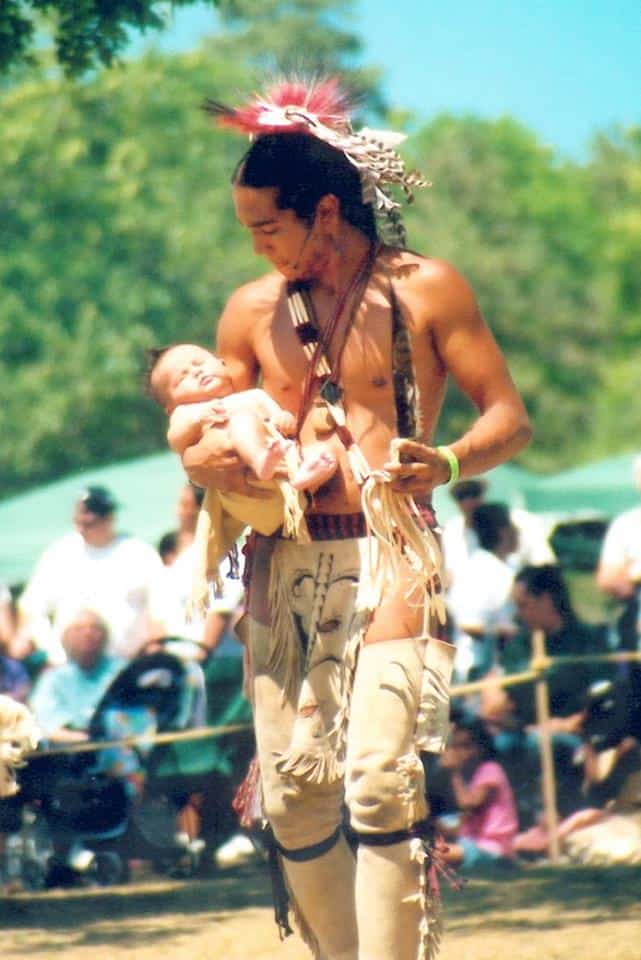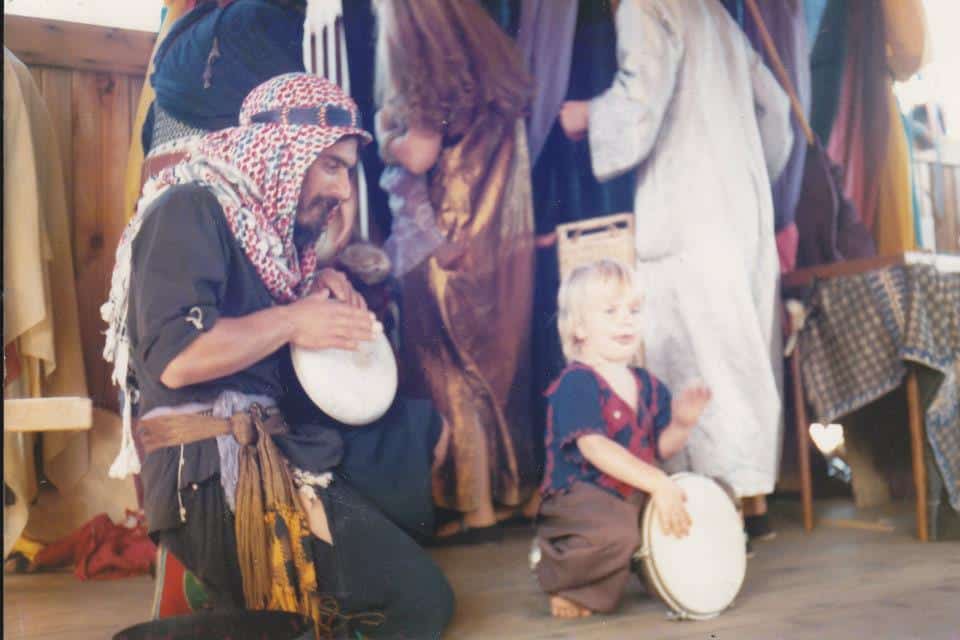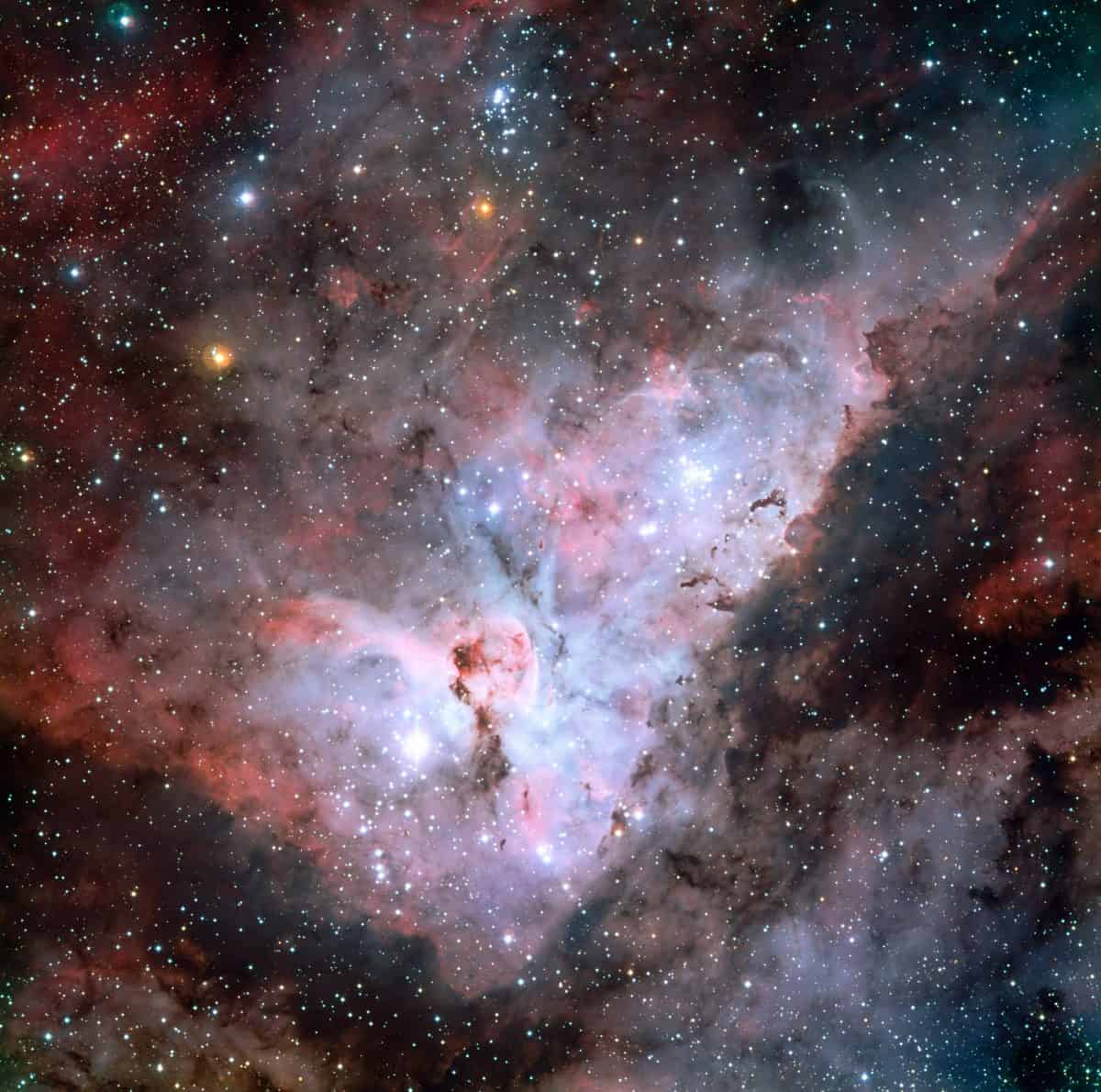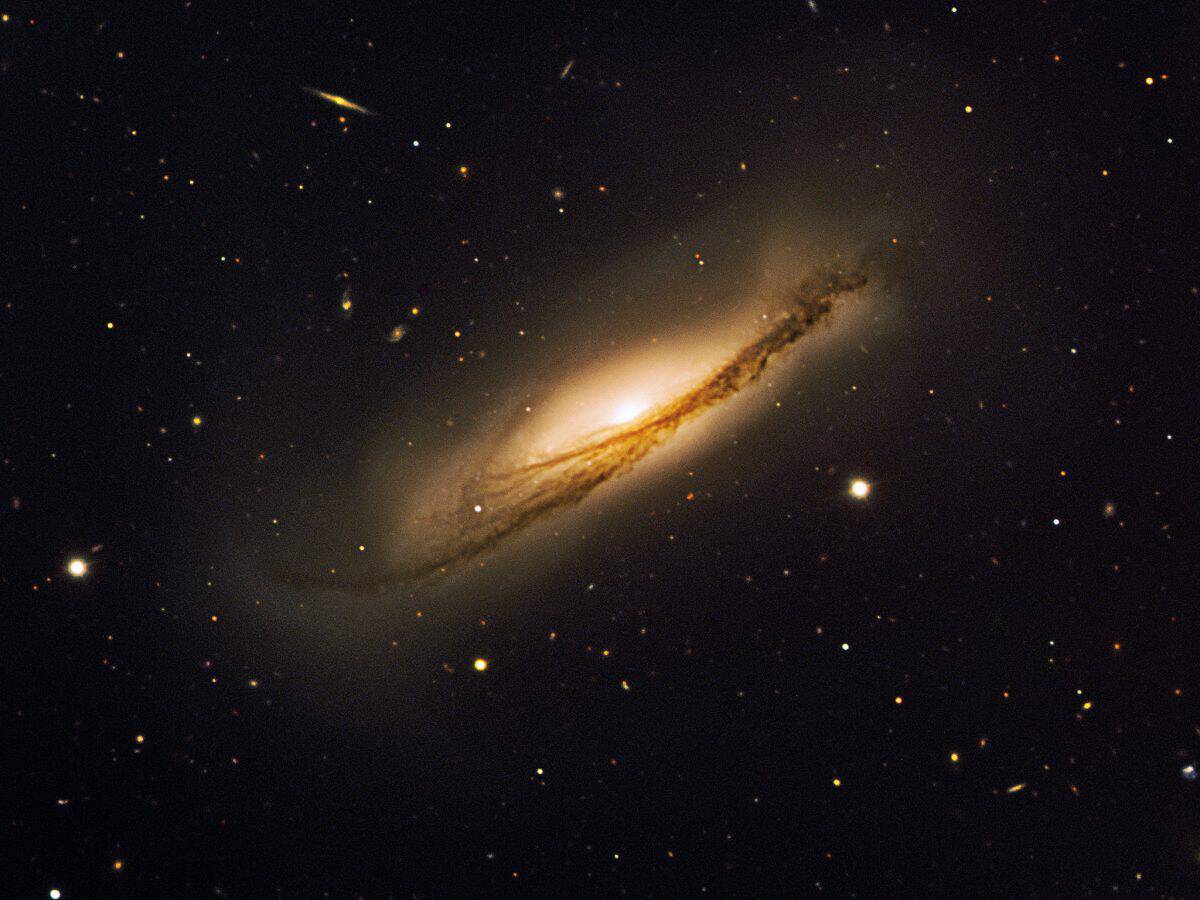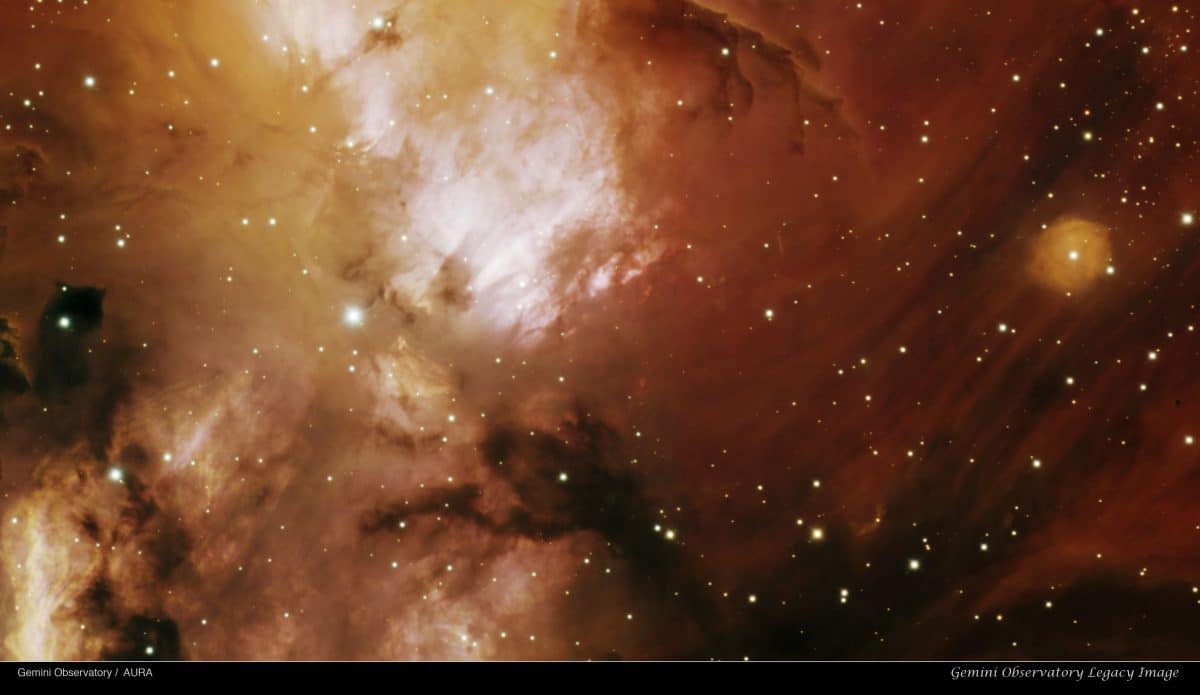Blog
Elmer H. “Rudy” Rutherford (June 18, 1924, Huachuca City, Arizona – March 31, 1995, New York City) was an American jazz saxophonist and clarinetist.
Rutherford played early in the 1940s with Lionel Hampton and Count Basie; he initially took Jack Washington‘s place in Basie’s orchestra as a baritone saxophonist, and once Washington returned from military service, Rutherford switched to alto saxophone. In 1947 Rutherford moved to Teddy Buckner‘s band, though he continued working with Basie into the early 1950s. He worked with Wilbur De Paris late in the 1950s and appeared with Chuck Berry at the Newport Jazz Festival in 1958. In the 1960s he worked with Buddy Tate and spent several years with Earl Hines in the mid-1970s. He worked with Illinois Jacquet in the 1980s and was active in performance until his death.
more...https://www.youtube.com/watch?v=gbuviE93Ew4
more...RCW 108 is a molecular cloud that is in the process of being destroyed by intense ultraviolet radiation from heavy and hot stars in the nearby stellar cluster NGC 6193, seen to the left in the photo. A series of images were obtained with the Wide Field Imager (WFI) of areas in the Milky Way band, including some in which interstellar nebulae of gas and dust are seen. Each frame records 8184 x 8196, or over 67 million, pixels in a sky field of 32 x 32 arcmin 2. The photo shows the RCW 108 complex of bright and dark nebulae in the southern association Ara OB1, a star-forming region in the constellation Ara (the Altar), deep in the southern sky. The resolution in this image has been degraded by reducing the number of pixels in one direction from about 8000 to 3000 in the “High-Resolution version”, in order to make the image transportable over the web without incurring completely unacceptable transfer times. Still, it is very large, even in the highly compressed jpeg format, reflecting the great amount of details visible.
This colour picture is a composite made from 12 separate images, obtained with the WFI on 27 March 1999. The blue component corresponds to the B filter, the green to the V filter, and the red to the H-alpha filter. The images in each filter are the composite of 4 individual frames obtained with the telescope pointing at slightly different positions on the sky, so that the parts of the sky falling in the gaps between the 8 individual 2k x 4k CCDs in any given frame are recorded on the others. The monochromatic images are then produced by superimposing the individual frames, correcting for the telescope offsets ; this ensures that the complete field is well covered. This procedure is not simple, as the observing conditions may change slightly from exposure to exposure, resulting in small differences. Finally, the combined images in each filter are aligned and colour-coded to produce the colour picture.
For the processing of this large photo (8k x 8k; 256 Mbytes), a minimum of contrast correction was made and very faint lines may still be perceived in some places where the individual frames were joined. It may also be noted that there is a slight misalignment of the individual colours in stellar images at the extreme corners of the large field. This is due to the effect of differential atmospheric refraction, i.e. light rays of different colours are bent differently in air.
The exposure time was 300 sec for each frame in H-alpha, and 60 sec in B and V. East is to the left and North to the top.
more...Charles Walter “Chuck” Rainey III (born June 17, 1940 in Cleveland, Ohio, United States) is an American bass guitarist who has performed and recorded with many well-known acts, including Aretha Franklin, Steely Dan, and Quincy Jones. According to Rainey’s website, he has performed on over 12,000 albums and nearly 150,000 songs.
Rainey’s youthful pursuits included violin, piano and trumpet. Later, while attending Lane College in Tennessee, Rainey switched to baritone horn to join the school’s travelling brass ensemble. While on active military duty, Rainey learned rhythm guitar and began playing professionally with local bands. His lack of improvisational skills on guitar led him to pick up the bass, and soon Rainey found himself working steadily as a studio bassist in New York City, recording or touring with many of the greatest acts of that time.
https://www.youtube.com/watch?v=gOdEd3IzBw4
more...Sing Miller (June 17, 1914, New Orleans – May 18, 1990) was an American jazz pianist. He was a longtime performer on the New Orleans jazz scene.
Early in his career, Miller sang with the Harmonizing Browns Quartet and played banjo, but in the late 1920s he switched to piano. He did freelance work solo and as an accompanist in New Orleans in the 1930s, playing with Percy Humphrey for a time. He served in the military during World War II, then played with Earl Foster‘s band from 1945 to 1961. In the 1960s he was a regular at Preservation Hall, working with Kid Thomas Valentine, Kid Sheik Colar, The Humphrey Brothers, Jim Robinson, and Polo Barnes. He did solo tours of Europe in 1979 and 1981, and recorded two full-length albums under his own name, a 1972 effort for Dixie Records and one in 1978 for Smoky Mary.
more...Colour-composite image of the Carina Nebula, revealing exquisite details in the stars and dust of the region. Several well known astronomical objects can be seen in this wide field image : to the bottom left of the image is one of the most impressive binary stars in the Universe, Eta Carinae, with the famous Keyhole Nebula just adjacent to the star. The collection of very bright, young stars above and to the right of Eta Carinae is the open star cluster Trumpler 14. A second open star cluster, Collinder 228 is also seen in the image, just below Eta Carinae. The Carina Nebula also bears the NGC 3372 designation. On this image, North is up and East is to the left. The field of view is 0.55 x 0.55 degrees, covering a 72 x 72 light-year region at the distance of the nebula.
more...Javon Anthony Jackson (born June 16, 1965) is an American jazz tenor saxophonist. He played in Art Blakey‘s Jazz Messengers from 1987 until Blakey’s death in 1990 and has played with the Harper Brothers, Benny Green, Freddie Hubbard, and Elvin Jones.
In his solo career, his music has been a mix of hard bop with soul and funk influences. He became chair of the University of Hartford‘s Jackie McLean Institute of Jazz in 2013
Jackson was born on June 16, 1965, in Carthage, Missouri, and brought up in Denver. His mother played the piano, and his father played trumpet, but Jackson began playing alto saxophone aged 10. At the age of 16, he changed to tenor saxophone and in his teens, he was taught by pianist Billy Wallace. He was briefly enrolled at the University of Denver, before spending part of 1985–86 at the Berklee College of Music, which he abandoned to join drummer Art Blakey‘s band.
more...Eli “Lucky” Thompson (June 16, 1924 – July 30, 2005) was an American jazz tenor and soprano saxophonist. While John Coltrane usually receives the most credit for bringing the soprano saxophone out of obsolescence in the early 1960s, Thompson (along with Steve Lacy) embraced the instrument earlier than Coltrane.
Thompson was born in Columbia, South Carolina, and moved to Detroit, Michigan, during his childhood. Thompson had to raise his siblings after his mother died, and he practiced saxophone fingerings on a broom handle before acquiring his first instrument. He joined Erskine Hawkins‘ band in 1942 upon graduating from high school.
After playing with the swing orchestras of Lionel Hampton, Don Redman, Billy Eckstine (alongside Dizzy Gillespie and Charlie Parker),Lucky Millinder, and Count Basie, he worked in rhythm and blues and then established a career in bebop and hard bop, working with Kenny Clarke, Miles Davis, Gillespie and Milt Jackson.
https://www.youtube.com/watch?v=_vUbe9PFhqs
more...
Sherrifo Konteh is the son of Alhaji Bai Konte and the brother of Dembo Konte, Sherrifo learned from both and has become an outstanding musician in his own right.
He was born in Brikama, the Gambia, where he still lives. Sherrifo comes from one the most famous of the jali families from a town that is the home of many jalis families. As most jalis, he was introduced to music at an early age. His father taught him how to play the kora at the age of six.
more...The beautiful edge-on spiral galaxy NGC 3190 with tightly wound arms and a warped shape that makes it resemble a gigantic potato crisp, as seen by ESO’s Very Large Telescope. Supernova SN 2002bo is found in between the ‘V’ of the dust lanes in the south-western part of NGC 3190. SN 2002cv is obscured by a large amount of dust and is therefore not visible. Its position is however indicated on the above image. This colour composite is based on images obtained on 26 March 2003 with FORS1 on UT2 (Kueyen) in four filters (B, V, R and I) for a total exposure time of 14 minutes. The observations were done in the framework of a programme aiming at studying the physics of Type Ia supernovae. The field of view is 6.15 x 5 arcminutes. North is up and East is to the left. The data extraction from the archive, data reduction and final colour processing of the image was done by Henri Boffin (ESO).
NGC 3190 is a spiral galaxy with tightly wound arms and lying in the constellation Leo. It was discovered by William Herschel in 1784. NGC 3190 is member of Hickson 44 galaxy group, estimated at around 80 million light years away,[2] and consisting of four galaxies in a tight group – NGC 3193 is fairly featureless, NGC 3187 is a dim but striking spiral galaxy and NGC 3185 has a barred spiral structure with an outer ring.
In 2002 two supernovae were observed in the galaxy. A Brazilian amateur astronomer Paulo Cacella detected one supernova in the southeastern part in March 2002 (SN 2002bo), and then an Italian team, while studying the first one, detected a second supernova (SN 2002cv) on the other side two months later.
more...John Arthur “Jaki” Byard (June 15, 1922 – February 11, 1999) was an American jazz multi-instrumentalist, composer and arranger. Mainly a pianist, he also played tenor and alto saxophones, among several other instruments. He was known for his eclectic style, incorporating everything from ragtime and stride to free jazz.
Byard played with trumpeter Maynard Ferguson in the late 1950s and early 1960s, and was a member of bands led by bassist Charles Mingus for several years, including on several studio and concert recordings. The first of his recordings as a leader was in 1960, but, despite being praised by critics, his albums and performances did not gain him much wider attention. In his 60-year career, Byard recorded at least 35 albums as leader, and more than 50 as a sideman. Byard’s influence on the music comes from his combining of musical styles during performance, and his parallel career in teaching.
From 1969 Byard was heavily involved in jazz education: he began teaching at the New England Conservatory of Music and went on to work at several other music institutions, as well as having private students. He continued performing and recording, mainly in solo and small group settings, but he also led two big bands – one made up of some of his students, and the other of professional musicians. His death, from a single gunshot while in his home, remains an unsolved mystery.
Byard was born in Worcester, Massachusetts. At that time, his parents – John Sr and Geraldine Garr – were living at 47 Clayton Street. Both of his parents played musical instruments; his mother played the piano, as did his uncles and grandmother, the last playing in cinemas during the silent film era. He began piano lessons at the age of six, but they ended when his family was affected by the Great Depression.
more...Erroll Louis Garner (June 15, 1923 – January 2, 1977; some sources say b. 1921) was an American jazz pianist and composer known for his swing playing and ballads. His best-known composition, the ballad “Misty“, has become a jazz standard. Scott Yanow of Allmusic calls him “one of the most distinctive of all pianists” and a “brilliant virtuoso.” He received a star on the Hollywood Walk of Fame at 6363 Hollywood Blvd.
Born with his twin brother Ernest in Pittsburgh, Pennsylvania, to an African-American family on June 15, 1923, Erroll began playing piano at the age of three. His elder siblings were taught piano by Miss Bowman. From an early age, Erroll would sit down and play anything she had demonstrated, just like Miss Bowman, his eldest sister Martha said. He attended George Westinghouse High School, as did fellow pianists Billy Strayhorn and Ahmad Jamal. Garner was self-taught and remained an “ear player” all his life – he never learned to read music. At the age of seven, he began appearing on the radio station KDKA in Pittsburgh with a group called the Candy Kids. By the age of 11, he was playing on the Allegheny riverboats. At 14 in 1937, he joined local saxophonist Leroy Brown.
more...World Music on Flamenco Fridays with Paco Soto
Paco Soto, Águilas (1991). At the age of ten, he was given a guitar and five minutes later he said he wanted to be a flamenco guitarist; since then he got to the task. He has studied at the Cante de las Minas de la Unión Festival and the Cristina Heeren Foundation in Seville, with guitarists such as Gerardo Núñez and Miguel Ángel Cortés. Finally he moved to Madrid to study with Enrique Vargas and make room.
https://www.youtube.com/watch?v=05FxQvJ9l2w
more...At the heart of a star-forming region called RCW 57, this image shows the complex interaction of interstellar gas and dark dust clouds among newly formed stars. The glowing gas is energized by ultraviolet radiation from the young stars. The intricate wispy structures in the cloud are formed by radiation from the young stars and the explosions of nearby, very massive stars that have exceptionally short lives compared to stars like our sun. A study by M. Maercker in 2006 revealed that the region is overly abundant with massive star formation with over 33 star-forming regions in the extended area at the end stages of formation. This region of the sky is only visible from observers in the southern hemisphere and is a popular showpiece for small telescopes and binoculars in the far-southern constellation of Carina. The Gemini image was obtained with the Gemini Multi-Object Spectrograph at the Gemini South telescope using two pointings to make a mosaic image that has a field of view of 9.0 x 5.0 arcsminutes. The exposures were taken through three narrowband filters: [OIII] (blue), [SII] (green) and H-alpha (red).
more...
More Posts
- World Music with Alune Wade
- Daily Roots with Pama International
- The Cosmos with M81
- Al Jarreau
- Hugh Lawson
- Jesse Fuller
- Don Drummond
- Sir Charles Thompson
- Flamenco Fridays with Camerón y Tomatito
- Daily Roots with the Symbals
- The Cosmos with NGC 602
- Harvey Mandel
- Bobby McFerrin
- Leroy Jenkins
- Astor Piazzolla
- Sonny Boy Williamson II
- World Music with Oberon
- Daily Roots with General Echo
- The Cosmos with NGC 1499
- Norman Blake




